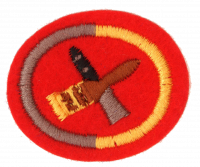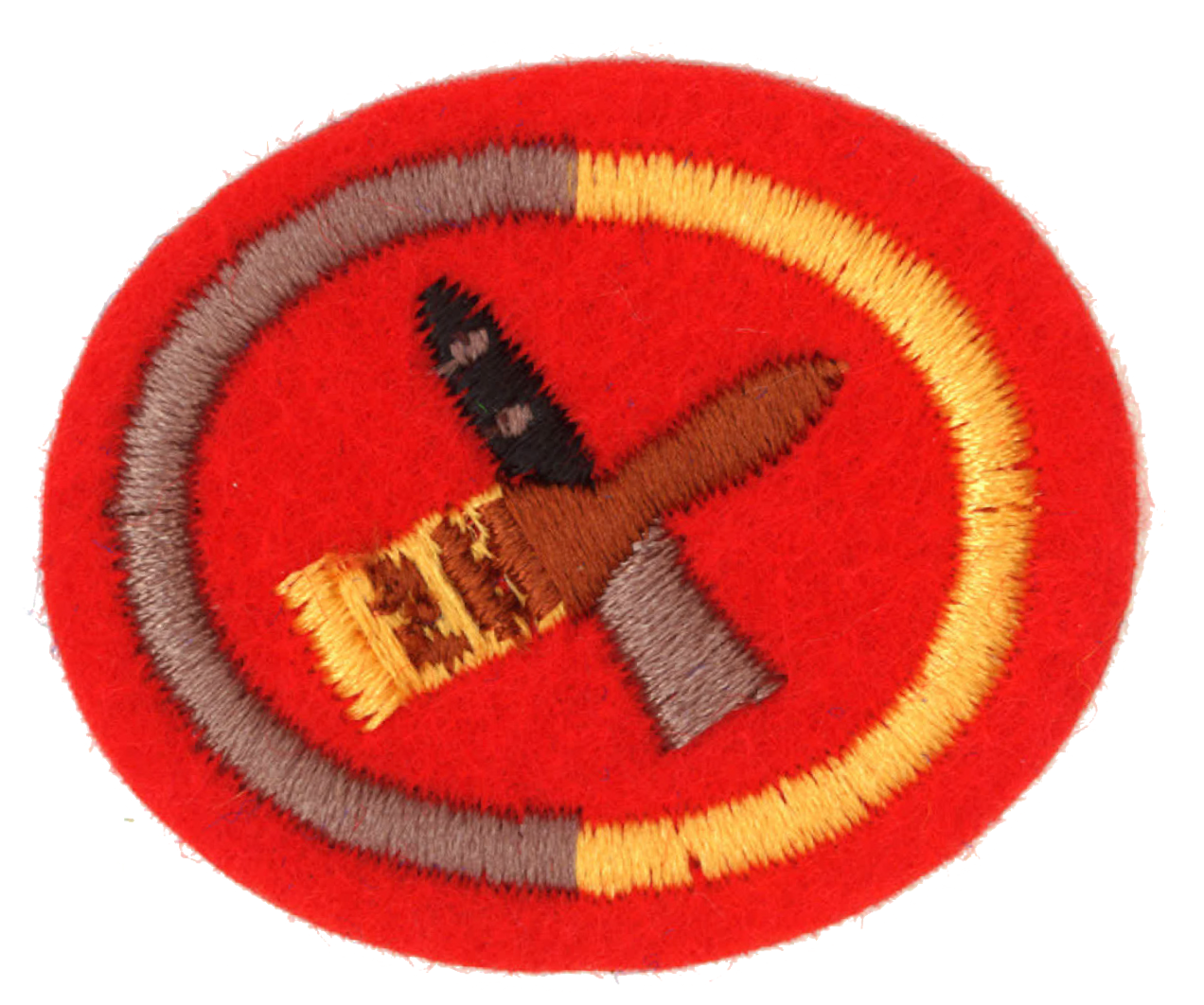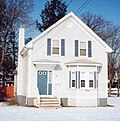Difference between revisions of "AY Honors/House Painting, Interior/Answer Key/es"
(Created page with "</noinclude>") |
|||
| (5 intermediate revisions by the same user not shown) | |||
| Line 23: | Line 23: | ||
{{CloseReq}} <!-- 1 --> | {{CloseReq}} <!-- 1 --> | ||
{{ansreq|page={{#titleparts:{{PAGENAME}}|2|1}}|num=2}} | {{ansreq|page={{#titleparts:{{PAGENAME}}|2|1}}|num=2}} | ||
| − | <noinclude> | + | <noinclude></noinclude> |
| − | </noinclude> | + | <!-- 2. Decir dos métodos de salpicado. --> |
| − | <!-- 2. | ||
| − | |||
| − | |||
| − | |||
{{clear}} | {{clear}} | ||
| Line 39: | Line 35: | ||
{{CloseReq}} <!-- 2 --> | {{CloseReq}} <!-- 2 --> | ||
{{ansreq|page={{#titleparts:{{PAGENAME}}|2|1}}|num=3}} | {{ansreq|page={{#titleparts:{{PAGENAME}}|2|1}}|num=3}} | ||
| − | <noinclude> | + | <noinclude></noinclude> |
| − | </noinclude> | + | <!-- 3. ¿Cuándo se debe utilizar una pistola de pintura? --> |
| − | <!-- 3. | ||
| − | |||
| − | |||
{{clear}} | {{clear}} | ||
| Line 50: | Line 43: | ||
{{CloseReq}} <!-- 3 --> | {{CloseReq}} <!-- 3 --> | ||
{{ansreq|page={{#titleparts:{{PAGENAME}}|2|1}}|num=4}} | {{ansreq|page={{#titleparts:{{PAGENAME}}|2|1}}|num=4}} | ||
| − | <noinclude> | + | <noinclude></noinclude> |
| − | </noinclude> | + | <!-- 4. Describir los métodos adecuados para la limpieza y el cuidado de los pinceles de pintura y barniz. --> |
| − | <!-- 4. | ||
| − | |||
| − | |||
| − | + | {{clear}} | |
| − | |||
| − | |||
| − | + | {{clear}} | |
| − | |||
| − | |||
| − | + | <noinclude></noinclude> | |
| − | <noinclude | ||
| − | |||
{{CloseReq}} <!-- 4 --> | {{CloseReq}} <!-- 4 --> | ||
{{ansreq|page={{#titleparts:{{PAGENAME}}|2|1}}|num=5}} | {{ansreq|page={{#titleparts:{{PAGENAME}}|2|1}}|num=5}} | ||
| − | <noinclude> | + | <noinclude></noinclude> |
| − | </noinclude> | + | <!-- 5. Mostrar cómo usar la masilla correctamente. --> |
| − | <!-- 5. | ||
| − | |||
| − | |||
| − | + | <noinclude></noinclude> | |
| − | <noinclude | ||
| − | |||
{{CloseReq}} <!-- 5 --> | {{CloseReq}} <!-- 5 --> | ||
{{ansreq|page={{#titleparts:{{PAGENAME}}|2|1}}|num=6}} | {{ansreq|page={{#titleparts:{{PAGENAME}}|2|1}}|num=6}} | ||
| − | <noinclude> | + | <noinclude></noinclude> |
| − | </noinclude> | + | <!-- 6. Explicar la diferencia entre las pinturas de exterior y las de interior. --> |
| − | <!-- 6. | + | {{:AY Honors/ExteriorInteriorPaint/es}} |
| − | {{: | ||
| − | |||
<noinclude></noinclude> | <noinclude></noinclude> | ||
{{CloseReq}} <!-- 6 --> | {{CloseReq}} <!-- 6 --> | ||
{{ansreq|page={{#titleparts:{{PAGENAME}}|2|1}}|num=7}} | {{ansreq|page={{#titleparts:{{PAGENAME}}|2|1}}|num=7}} | ||
| − | <noinclude> | + | <noinclude></noinclude> |
| − | </noinclude> | + | <!-- 7. Hacer una lista de 10 combinaciones de color adecuadas para pintar el interior de la casa,utilizando muestras de un taller de pintura. ¿Por qué no se prefieren los colores brillantes/fuertes? --> |
| − | <!-- 7. | ||
| − | |||
| − | |||
| − | {{: | + | {{:AY Honors/Color Schemes/es}} |
<noinclude></noinclude> | <noinclude></noinclude> | ||
{{CloseReq}} <!-- 7 --> | {{CloseReq}} <!-- 7 --> | ||
{{ansreq|page={{#titleparts:{{PAGENAME}}|2|1}}|num=8}} | {{ansreq|page={{#titleparts:{{PAGENAME}}|2|1}}|num=8}} | ||
| − | <noinclude> | + | <noinclude></noinclude> |
| − | </noinclude> | + | <!-- 8. Explicar la composición y cuándo se utilizan las siguientes pinturas: --> |
| − | <!-- 8. | + | <noinclude></noinclude> |
| − | <noinclude | ||
| − | |||
{{ansreq|page={{#titleparts:{{PAGENAME}}|2|1}}|num=8a}} | {{ansreq|page={{#titleparts:{{PAGENAME}}|2|1}}|num=8a}} | ||
<noinclude></noinclude> | <noinclude></noinclude> | ||
| Line 115: | Line 87: | ||
<noinclude></noinclude> | <noinclude></noinclude> | ||
| − | + | {{clear}} | |
| − | |||
| − | |||
| − | + | <noinclude></noinclude> | |
| − | <noinclude | ||
| − | |||
{{CloseReq}} <!-- 8b --> | {{CloseReq}} <!-- 8b --> | ||
{{CloseReq}} <!-- 8 --> | {{CloseReq}} <!-- 8 --> | ||
{{ansreq|page={{#titleparts:{{PAGENAME}}|2|1}}|num=9}} | {{ansreq|page={{#titleparts:{{PAGENAME}}|2|1}}|num=9}} | ||
| − | <noinclude> | + | <noinclude></noinclude> |
| − | </noinclude> | + | <!-- 9. Pintar el tallado de madera (obras de carpintería) de al menos cuatro habitaciones. --> |
| − | <!-- 9. | ||
| − | |||
| − | |||
| − | + | <noinclude></noinclude> | |
| − | <noinclude | ||
| − | |||
{{CloseReq}} <!-- 9 --> | {{CloseReq}} <!-- 9 --> | ||
{{ansreq|page={{#titleparts:{{PAGENAME}}|2|1}}|num=10}} | {{ansreq|page={{#titleparts:{{PAGENAME}}|2|1}}|num=10}} | ||
| − | <noinclude> | + | <noinclude></noinclude> |
| − | </noinclude> | + | <!-- 10. Pintar al menos una habitación, mostrando su habilidad de mantener la pintura en el lugar que corresponda. --> |
| − | <!-- 10. | ||
| − | |||
| − | |||
| − | + | {{clear}} | |
| − | |||
| − | |||
| − | + | {{clear}} | |
| − | |||
| − | |||
| − | |||
| − | |||
| − | |||
| − | |||
| − | |||
| − | |||
| − | + | {{clear}} | |
| − | |||
| − | |||
| − | + | {{clear}} | |
| − | |||
| − | |||
| − | + | {{clear}} | |
| − | |||
| − | |||
| − | + | <noinclude></noinclude> | |
| − | <noinclude | ||
| − | |||
{{CloseReq}} <!-- 10 --> | {{CloseReq}} <!-- 10 --> | ||
{{ansreq|page={{#titleparts:{{PAGENAME}}|2|1}}|num=11}} | {{ansreq|page={{#titleparts:{{PAGENAME}}|2|1}}|num=11}} | ||
| − | <noinclude> | + | <noinclude></noinclude> |
| − | </noinclude> | + | <!-- 11. Decir y demostrar cómo almacenar correctamente la pintura no utilizada. --> |
| − | <!-- 11. | ||
| − | |||
| − | |||
| − | + | {{clear}} | |
| − | |||
| − | |||
| − | + | {{clear}} | |
| − | |||
| − | |||
| − | + | {{clear}} | |
| − | |||
| − | |||
| − | + | <noinclude></noinclude> | |
| − | <noinclude | ||
| − | |||
{{CloseReq}} <!-- 11 --> | {{CloseReq}} <!-- 11 --> | ||
| − | <noinclude> | + | <noinclude></noinclude> |
| − | </noinclude> | + | ==Nota histórica== |
| − | == | + | {{:AY Honors/Painting/History/es}} |
| − | {{: | ||
| − | |||
| − | + | ==Referencias== | |
| − | = | + | <references /> |
| − | <references/> | + | <noinclude></noinclude> |
| − | |||
| − | <noinclude | ||
| − | |||
{{CloseHonorPage}} | {{CloseHonorPage}} | ||
Latest revision as of 17:37, 14 July 2022
Nivel de destreza
3
Año
1938
Version
25.12.2025
Autoridad de aprobación
Asociación General
1
- a. Tinte
- b. Barnizado
- c. Pintura
2
3
4
5
6
La pintura se hace para el uso interior y exterior, y se hace con diferentes características.
| Características de pintura interior | Características de pintura exterior |
|---|---|
| Buena limpieza y resistencia a las manchas | Retención de color/resistencia a la decoloración |
| Capacidad de ocultar/cubierta (lo que se está pintado) | Flexible (se expande o contrae con los cambios del clima) |
| Resistencia a las salpicaduras | Resistencia al moho |
| Retoque simple | Durabilidad |
7
Antes de ir a la tienda de pintura, podría ser una buena idea revisar losesquemas de colores. Para esto, nos dirigimos al círculo cromático, que muestra todos los colores del arco iris desde el color rojo, al amarillo, al azul, y de regreso a rojo. Estos son los colores primarios y todos los otros colores en el círculo se pueden formar mezclándolos juntos. Si se mezclan cantidades iguales de colores primarios, se obtiene un color secundario: rojo y amarillo hacen anaranjado, amarillo y azul hacen verde, y azul y rojo hacen violeta.
La mezcla de un color secundario con un primario adyacente forma un color terciario. Por ejemplo, el azul mezclado con verde hace azul-verde.
Blanco y negro no se consideran como colores, aunque sí afectan la manera en que se miran los colores. La mezcla de blanco con un color produce un tinte. Mezclar negro con un color produce una sombra.
Muchas clases de esquemas de colores se han diseñados para diferentes propósitos, pero se centrará en tres:
- Monocromo
- Complementario
- Análogo
De estas tres recetas, se puede hacer fácilmente diez esquemas de colores (sólo elegir un par de diferentes colores «base» para cada uno hasta que haya diez).
Monocromo
En este esquema, se utiliza un solo color, pero diversos tintes y sombras se combinan, como el azul, celeste y azul oscuro. El pintor también puede utilizar varios tonos, como el celeste, azul más claro, y un azul más claro aún que eso.
Complementario
Los colores complementarios son los colores que son opuestos entre sí en círculo cromático, como el azul y el anaranjado, rojo y verde, y púrpura y amarillo.
El alto contraste entre los colores crea un aspecto vibrante, especialmente cuando se utiliza en la saturación completa. Los colores complementarios pueden ser difíciles de utilizar en dosis grandes.
Análogo
También llamados colores armoniosos, son colores que están uno al lado del otro en el círculo cromático. Algunos ejemplos son el verde, verde claro y amarillo o rojo, anaranjado y amarillo. Combinaciones de colores análogos a menudo se encuentran en la naturaleza y son agradables a la vista.
8
8a
8b
9
10
11
Nota histórica
Pintado de Casa - Interior, Pintado de Casa - Exterior y Empapelado originalmente eran una especialidad llamada simplemente Pintado de Casa. Fueron separadas a Pintado de Casa y Empapelado en 1944, y descontinuadas en 1956. Fueron reintroducidas en 2002 como 3 especialidades distintas.
Referencias






